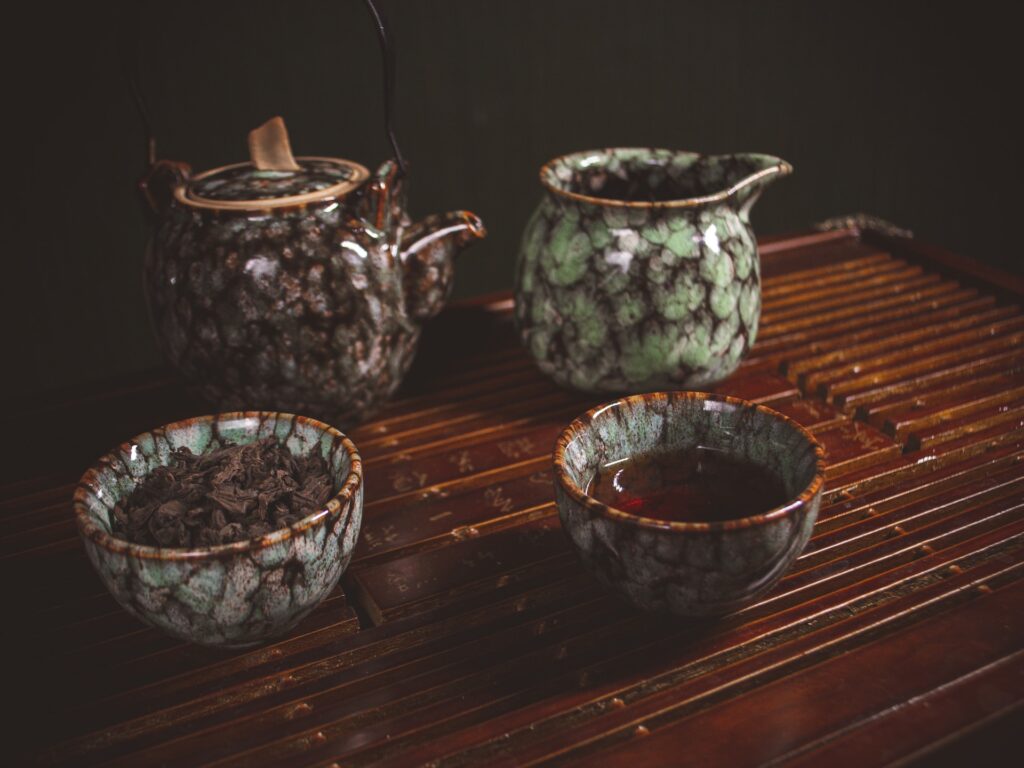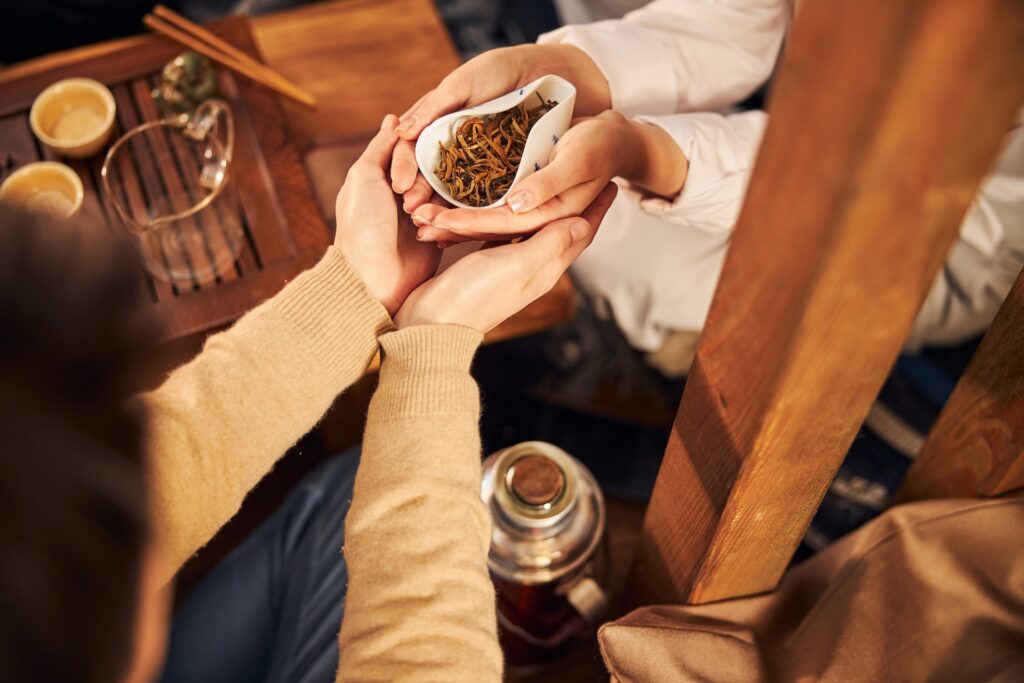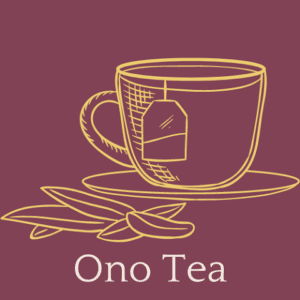Hey there! Are you a tea connoisseur like myself? Ah! Then I bet you’ve heard of these two gems: Oolong and pu-erh. If the world were Hollywood, these two would be on the Walk of Fame! I tell you, these two teas have garnered fame since ancient times. I know firsthand why! From the health benefits to the taste, they sure are a treat! Don’t worry if you haven’t heard of them! We will explain all the nitty-gritty in this article.
Neither Pu Erh nor Oolong can be easily found in Western markets. However, it’s an entirely different story in China! It’s no surprise why; they’ve been incredibly successful there, and rightly so! These two types of tea are totally different from the regular black, green, and white kinds! It’s unbelievable how varied teas can be.
Well, not only do they reap the same health rewards, but each one has its own unique benefits too! Pu Erh vs. Oolong? Hmmmm…tough choice to make. Ready to see which one takes the crown (or if both do)? Let’s dive in!
Oolong Tea
Oolong tea, sometimes called Wulong or Black Dragon, is a unique blend of green and black tea. It’s unlike anything else. It is somewhere between totally oxidized black tea and the less processed green variety. This delicate tea has a delightful range of flavors and aromas, from light and floral to creamy and toasty. Why? Because of its sophisticated oxidation process! With attention to detail, proficient tea masters carefully wither, bruise, oxidize, and roast the leaves until this satisfying drink is finally perfected!

Pu Erh Tea
Pronounced ‘poo-er,’ it gets its name from the Pu Erh area of Yunnan, China. Unlike ordinary teas, it’s a unique aged and fermented black variety that can take years to bring out its full flavor. Its taste is like no other tea—deep and earthy—making it truly one-of-a-kind.
There are two versions you can try: the naturally aged Sheng (raw) or the hastily fermented Shou (ripe). Personally, I think Pu Erh tea is just like a splendid bottle of wine. The longer you age it, the more delectable its flavor becomes!
Enjoy the delightful ride that Oolong and Pu Erh tea have to offer! Every sip takes you on a journey through the ancient culture and expert craftsmanship of Chinese tea. The unique alchemy of nature is truly astounding; it’ll surely spark your inner explorer. Savor each cup’s enticing flavors, textures, and fragrances as we unpack these teas in depth. So go ahead, open your heart, and explore!
Origins and History
Ooh, Oolong and Pu Erh tea! Where did it all start? Both of these teas have very long histories, spanning centuries! For example, Oolong tea is an ancient drink that originated in the Fujian province of China during the Ming Dynasty about 400 years ago. On the other hand, you can trace Pu Erh tea back over 2000 years to Yunnan province in China—incredible, right!? Originally produced as a cake or brick form of dark fermented tea leaves, it has now been divided into two categories: ripe and raw (raw being typically aged for many years). Yes, they differ in origin. However, these types of teas are incredibly full-bodied. Furthermore, they have complex flavors and aromas that make them truly special. How amazing!
Legend has it that Oolong teas entered the world after a Fujian tea farmer chased a river deer and lost track of some tea leaves, only to find out they had been deteriorating when he returned. Rather than discarding them, he brewed what became an unexpectedly delicious drink!
Pu Erh tea is steeped in history; it dates back to the Eastern Han Dynasty (25–220 AD) and can be traced right back to the Yunnan Province in southwestern China. This area has a unique flavor thanks to its exotic environment, rich wildlife, and ancient thousand-year-old tea plants! It was traditional for Pu Erh to be baked into cakes or bricks and transported via the Ancient Tea Horse Road, a network of pathways across the mountains that facilitated trade between Tibet and beyond.

Comparing Pu Erh vs Oolong
Flavors and Aroma
Even though they come from the same family, the Camellia sinensis plant, there’s a remarkable divergence in their aroma and flavor.
Oolong Tea is the chameleon of the tea world. The degree of oxidation and a tea master’s expertise determine how much flavor and fragrance can be extracted from each batch. Take Tieguanyin, for example; it has a light floral-vegetal aroma like in a freshly watered garden, with a delightful aftertaste that’s brightly sweet.
As we move towards more oxidized varieties, says Da Hong Pao, deep notes of dark fruits, toasted nuts, and caramel permeate the cup. You get that soft, silky texture—hearty, warm, and dense. It truly is remarkable how one kind of tea can exhibit such varied flavors!
Calling all tea lovers: oolong is not the only tea to try! Pu-erh tea has a different tale to tell! Unlike pure green tea, pu-erh’s flavor can be enjoyed at any age. But if you let time take its course, it will develop an even more intense flavor profile.
You may taste a delightful blend of ripe fruits, earthy woodland floor, and sweet hay in Sheng Pu Erh that’s been matured for some time. Alternatively, rapid fermentation gives Shou Pu Erh a bold and complex taste—think wet wood, mushrooms, leather, and delicious dark chocolate. Moreover, this calming cuppa is almost naturally medicinal. No wonder! Many black coffee enthusiasts are drawn to it!
Health Benefits
Traditional Chinese medicine recognized its health benefits ages ago. Now modern science is recommending them, too. As delicious as these teas may be, folks shouldn’t forget they’re no substitute for a professional medical opinion. Enjoy the best of these distinctive brews—in moderation, of course!
Oolong tea: the miracle elixir! It’s no surprise that it touts many theoretical weight-loss benefits. After all, it’s high in catechins and polyphenols, bioactive chemicals that boost metabolism and fat oxidation.
Plus, its antioxidant qualities help regulate blood sugar levels and promote cardiovascular health! But there are even more reasons to reach for the oolong: studies show that indulging in a cup of this semi-oxidized tea could reduce your risk of neurodegenerative diseases and enhance cognitive performance.
Oh, not to mention it’ll also make you feel more calm and more clear-headed thanks to its lovely L-Theanine content. So what are you waiting for? Fill up your mug with some oolong today!
Natural Health Benefits of Olong Tea and Pu-erh Tea
If you’re looking to reap some serious health benefits, you’ve got to try some pu-erh tea. Not only can it help lower your cholesterol levels, but studies have also shown its detoxifying and digestive properties.
What’s more? It even contains trace levels of lovastatin, which is present in many cholesterol-lowering drugs. Plus, those probiotics created during its unique fermentation process may just give your gut a fighting chance at digestive health. So why not indulge yourself with a cup after each meal? After all, they say Pu’erh is known for aiding in the digestion of oily and greasy meals—yum!
Price
Both Oolong and pu-erh teas may, at first glance, look like black teas since they both go through an oxidation process. That said, they can be a bit pricey; these exclusive beauties require plenty of time and care to set up shop!
Oolong and Pu Erh teas are oxidized, but the process for Oolong is quicker and less intense. As for Pu Erh, it gets fully oxidized too, just like black tea!
Oolong and Pu Erh are some pretty special teas—not usually the kind of thing people pick up in their local grocery stores here in the West. But don’t let that fool you, because these mind-blowing beverages have incredible health benefits! They come from the same plant, after all, so they pack a similar punch for taking care of yourself.
Oolong and Pu Erh teas can be quite pricey, especially compared to the usual green and black teas at the supermarket. But if you’re looking for a cheaper option, some less authentic varieties go by those names.
Is Oolong Tea Your Cup of Tea?
If you’re into fragrant, fruity teas with a hint of redness, then Oolong will be ideal. For the creative folks out there, this unique flavor pairs nicely with toppings such as cinnamon and nutmeg. It may be slightly different from floral green teas—like green tea with jasmine—but it’s not too far off from Earl Grey, which is a black tea! Who would have thought?!
Love a cuppa of green tea? Then you’ll probably adore Oolong too! Even though it has a unique taste, it still falls within the classic green or black tea family. Enjoying the flavor of both means twice the joy!
Oolong tea goes great with Chinese food—no surprise since it’s a Chinese invention and is used in Chinese restaurants—because it pairs so perfectly with all the different flavors.
Ugh, the tea-brewing process can be a real drag. But here’s the good news: one of the best instant tea powders out there is an all-natural oolong with nothing artificial or sugar added! Yippee! It might not be as good as loose-leaf tea, but this instant stuff is really quite tasty. Furthermore, you can make it in no time!

Is Pu Erh Tea Your Cup of Tea?
Who should be drinking Pu Erh tea? Well, believe it or not, it’s the perfect choice for just about anyone! In addition to tasting great, this one-of-a-kind type of tea offers a variety of health benefits that you can’t ignore.
If adventure’s your thing and you can’t resist a tasty beverage, Pu Erh is exactly what you need! Boasting dark tones with earthy hints and sometimes sweetly fruity or even slightly bitter depths, this unique brew takes your taste buds on a wild ride. Kick back and enjoy exploring the flavors—that’s why they call it an “adventure”!
Not surprisingly, pu-erh is a coffee drinker’s favorite tea. Although the flavor isn’t quite similar, there’s still an unmistakable earthy taste to it. And really, when you get down to it, all the small details make the difference.
If you consider yourself a breakfast extraordinaire, prepare to get your morning caffeine buzzed on with this delectable Pu Erh tea—it’s the perfect way to kick-start your day. Brew it strong and get ready for a seriously jolting wake-up call!
Oolong Serving Tips
As any true tea lover knows, brewing is about so much more than just creating a beverage—it’s about pleasing the senses! So let’s dive right in and explore what makes these two types of tea truly special.
A classic Chinese Gaiwan or a tiny Yixing clay teapot are must-haves if you’re looking to brew up an amazing cup of Oolong tea. Those huge, coiled leaves take full advantage of the shape and size of these containers, releasing all their flavor.
Alrighty, now let’s get going! Start by filling your teapot with hot water and letting it sit for a few minutes before pouring it out. Next, add about 5-7 grams; that’s about one teaspoon’s worth per 6 ounces of water.
Now you’re ready for the fun part: rinsing.’ This technique involves submerging the leaves in hot (between 185-205 degrees, depending on the type of oolong) water and then quickly discarding this infusion before beginning the real brewing process. And here comes why oolong is so popular: re-steep those leaves in boiling water for anywhere between 1 and 2 minutes to capture light flavors, or lengthen your steep time to really bring out the complexity Oolong is known for. Plus, remember one essential component. The scent of wet oolong leaves! Sit back and simply enjoy its aromatic release between each infusion—blissful!
Pu Erh Serving Tips
Prepare to take your pu-erh tea game up a notch! Get ready to practice Gongfu cha, the traditional Chinese way of preparing Pu Erh tea. All you need is a teapot, a tiny Yixing clay teapot, or Gaiwan, and some individual sampling cups.
Let’s begin by “rinsing” the tea by preheating the teapot to around 212 degrees Fahrenheit and adding a slice of Pu Erh cake (5-7 grams works best), then rinsing it with boiling water for only a few seconds before discarding it. Doing this cleaning ritual also helps release all those tightly packed leaves.
Soak it in near-boiling water again, but how long should you steep it? That’s entirely up to personal preference! Generally, if you’re dealing with Shou Pu Erh, go for 10–15 seconds. Sheng Pu Erh, especially young ones, should be steeping anywhere from 20 to 30 seconds. Plus, here’s something worth getting excited about: Pu Erh tea can withstand multiple infusions. Each one has its own unique flavor profile!
Brewing Oolong and Pu Erh teas the conventional way is superb, but don’t be afraid to experiment with varying amounts of tea leaves, water temperature, and steep times for a masterful cup you’ll love!
Remember, making tea isn’t just about following instructions; it’s an individual experience. Each cup can bring something special to your day, from an experienced all-day barista to a brand new steeping initiative! So go ahead and enjoy the personal journey that comes with every brew!
Conclusion
Hey, tea lover. We have come to the end of this debate: Pu Erh vs. Oolong. Now, here is the low-down: they’re both great! I have had the privilege of enjoying both, and I tell you, you’ve got to love both! Okay, so here is the breakdown: Pu Erh is the more earthy and robust of the two options. So if that’s what tickles your fancy, go for it! Furthermore, it’s packed with those deep, malty flavors—perfect for sophisticated sipping. Meanwhile, Oolong is a lighter, fresher brew that brings out its unique floral aromas as it steeps. If that’s your type, Oolong’s got you!
Regardless of your preference—bold or bright—there’s something to satisfy everyone! I must say, the health benefits are remarkable too! So why not indulge in one today? You won’t regret it! I did! Trust me, it was one of the best decisions of my life!
Oh, and by the way, if you are head-over-heels for coffee, then you’ll love Pu Erh! It’s not as intense but still has its own unique flavor profile. Oolong provides a more subtle taste experience with its complex nuances. Well, there you have it! Try these delectable beverages and see which one knocks your socks off—maybe both will. Happy sipping!

